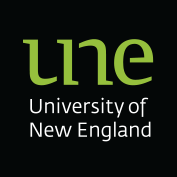Assessment Architecture and TEQSA ‘Enacting Assessment Reform in a Time of Artificial Intelligence’.
As everyone will know, we have now embarked across the Faculty in implementing UNE’s Assessment Architecture for implementation in trimester 1, 2026, which means finalization through the academic governance process (ie, SEC committees) by late December 2025. For those not yet familiar with the Architecture, it:
- Introduces two ‘lanes’ of assessment – ‘assured’ tasks (lane 1) that assess learning outcomes in a controlled environment both in terms of student identity and access to materials and ‘learning’ tasks (lane 2) where student access to materials is not controlled. In Lane 2 tasks, it will not be possible to prohibit or restrict the use of generative AI, though its use can be discouraged. The AI detector in TurnItIn will be turned off.
- In its default mode, requires all units to have assurance of learning.
- Provides for an alternative path for assurance where assurance in every unit was not feasible or academically appropriate. This includes both alternative assurance at unit level, and programmatic assurance, where course learning outcomes are assessed by assurance tasks at strategic points across a program.
- Assigns to School education committees the responsibility for assessing alternative assurance (this represented the major change from the proposal that came to Academic Board).
In HASS, an alternative, programmatic assurance approach has been adopted. In Education, an alternative path is being used for most courses, although some will have every-unit assurance.
Subsequent to the commencement of implementation, TEQSA’s published its Enacting Assessment Reform in a Time of Artificial Intelligence. Contrary to expectations, this is not a Statement of Regulatory Expectations, but a guidance document, updating the previous Assessment Reform in the Age of Artificial Intelligence’ (September 2023) guidance. This document maintains the previous 2 key principles:
- Assessment and learning experiences should equip students to participate ethically, critically, and actively in a society where generative AI is ubiquitous.
- Forming trustworthy judgements about student learning requires multiple, inclusive and contextualised approaches to assessment.
These principles underpin 5 propositions:
- Appropriate, authentic engagement with generative AI
- A systematic approach to program assessment aligned with disciplines and qualifications
- The process of learning
- Opportunities for students to work appropriately with each other and generative AI
- Security at meaningful points across a program to inform decisions about progression and completion.
In light of these principles and propositions, the document recommends three pathways for assurance of learning in line with principle 2:
- Assuring learning across the whole degree program: a comprehensive redesign of assessment across programs to capture valid evidence of attaining learning outcomes.
- Assuring learning by unit: assurance incorporated into each unit.
- Assurance of learning across degrees, with some remaining in units only: a hybrid of 1 and 2.
The document regards pathway 1 as the ‘most comprehensive and aligned response’, and the Architecture envisages such reform as a future step at UNE. The document cautions against reverting to ‘inequitable assessment formats that only focus on assuring learning’.
It is notable that UNE’s Assessment Architecture in its default form is in line with pathway 2, while the Alternative Assurance at program level is in line with pathway 1 or 2 (depending on the extent of program redesign). As such, should this guidance document form the basis of a future regulatory statement, implementation of the Assessment Architecture will place in the institution in a strong position to meet these regulatory expectations.
Learning and Teaching Symposium
One learning and teaching symposium remains to come this year:
- L&T Half-day symposium – Technology and GenAI: 16th October 2025
EOIs for the symposium presentation can be registered through the Symposium Website.



Recent Comments